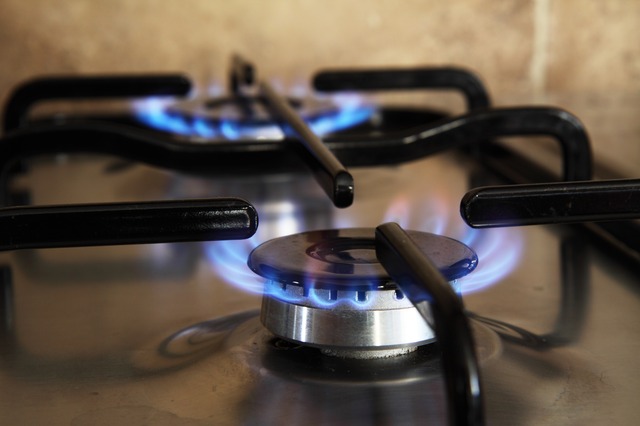4 Tips on Kitchen Safety - Hidden Hazards For Seniors
I think I spend about three hours a day in my kitchen. Just when I get a meal or snack prepared, served and cleaned-up, it seems to be time to eat again. I guess that is the norm for busy families that are constantly on the go.
Yet, while the kitchen is one of the most lived-in rooms in the house, there are many hazards here that are often overlooked. These hazards can result in illness or injury if not addressed. For example, did you know that the dish cloth or sponge is the most dangerous item in your kitchen? That a senior’s shirt can catch on fire while stirring something on a gas stove? That there are all sorts of bacteria (including fecal matter) on the rinds of lemons and limes (but we squeeze these and throw them in our drink!).
My blog today is going to highlight some of the under-estimated hazards in the kitchen, including:
1. Dirty Dish Sponges: Did you know that a dirty dish sponge can harbour and spread disease-causing bacteria? A study completed at the University of Arizona detected salmonella in 15% of sponges that were examined. As we age, it becomes more difficult for our bodies to fight off disease, making it important to be aware of how bacteria spreads and how to prevent it. A simple way to get rid of bacteria on sponges is to wet the sponge and zap it in the microwave for about one minute. Or for dish cloths, rotate and wash these regularly using bleach if available.
2. Cross-contamination of food: Ensure to thoroughly wash your hands, surfaces, and utensils after handling meat, poultry, or seafood to avoid spreading bacteria. Keep two cutting boards – one for meat products, and one for other food items. Purchasing cutting boards in different colours or labeling them can make it easier to discriminate between the two. Considering putting your cutting boards in the dishwasher after use to increase sanitation.
3. Spoiled Food and Storing Leftovers: Never leave raw meat, poultry, seafood or leftovers on the counter for longer than two hours. If defrosting food, defrost in the refrigerator or immerse in cold water. When storing food in the fridge, the temperature should be set to 4° C (40°F) or lower and your freezer at -18°C (0° F) or lower to avoid growth of bacteria. Ensure to keep meat, poultry, and seafood in sealed bags separate from the rest of your food items. The best place for these items is on the bottom shelf, so that juices can’t drip onto other food. If you are storing leftovers, use labels to record when each product was prepared.
General guidelines for storing items in the fridge are as follows:
• Bacon: 1 week
• Lunch meat: 3-5 days
• Fresh beef, veal, lamb, and pork: 3-5 days
• Cooked meat, poultry, pizza, stews: 3-4 days
• Fresh poultry, ground meats, or raw sausage: 1-2 days
Go through your fridge weekly to throw out anything outdated or questionable. Always remember – when in doubt, throw it out!
4. Forgetting to Turn-off the Oven or Stovetop: This is extremely dangerous and can lead to fires or burns. To avoid this, stay close to anything cooking and use a timer or alarm. If you worry about forgetting to turn things off, consider using a visual checklist to remind you to check the stove. Place this at the exit to your kitchen, or post it at the door you use to leave your home. If you must leave the kitchen area while cooking for any reason (e.g. to answer the phone or the door), wear an oven mitt or carry a kitchen utensil with you to serve as a visual reminder to return to the kitchen as soon as you can. If using the oven, always wear long sleeved oven mitts to avoid burns. Alternatively, slow cookers are an easy and safe substitute to using the stovetop when preparing meals.
Although this is not an exhaustive list of kitchen safety hazards, the above are some of the most common and the easiest to avoid. Of course, there are other kitchen safety hazards that are created when children, older adults, or senior citizens have physical, cognitive, emotional or behavioral disabilities. But the good news is there are many aids, devices and strategies that can help seniors to improve their independence and safety during meal tasks. Consider consulting an occupational therapist for suggestions on ways to be successful in the kitchen.
References:
1) http://www.chow.com/food-news/54707/10-kitchen-hazards/
2) http://healthycanadians.gc.ca/eating-nutrition/safety-salubrite/safety_home-maison_salubrite-eng.php#Refridgerator
3) http://www.foodsafety.gov/keep/charts/storagetimes.html
Julie can be reached at Entwistle Power Occupational Therapy, 1425 Cormorant Road, Suite 301, Ancaster ON L9G 4V5
T: 866-683-0345
E: office@entwistlepower.com W: entwistlepower.com
Disclaimer: The opinions presented in this post are generalized and do not negate the need for an occupational therapy assessment to outline specific functional impairments and solutions for any one client.


